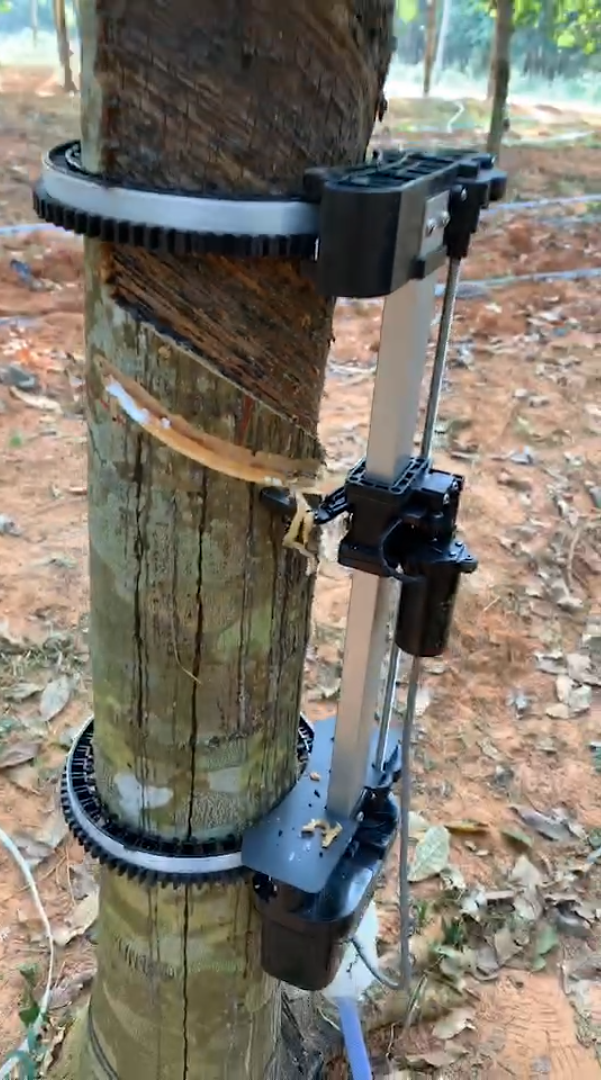
The customer application, developed by automated rubber-tapping specialist CIHEVEA, uses low-power networking to revolutionize the automation of extracting latex from rubber trees. CIHEVEA has equipped more than 200,000 rubber trees within its Hainan rubber-tree plantation with its innovative solution to improve rubber-tapping productivity and output capacity.
The ST LoRa SoC acts as a highly efficient, low-power communication hub and control centre for the Rubber Tapping Robot from CIHEVEA. The robot also includes two precision motors and a series of environmental sensors that monitor weather conditions, including temperature, air pressure, and humidity. Clamped to the tree, the STM32WLE5 transmits the sensors’ data to a mesh gateway via a dedicated LoRa application network server, where the server can monitor, test and debug, and coordinate the robots in the field. Once all pre-set conditions are met, the SoC triggers the rubber tapping motors to perform autonomous cutting, which usually happens very early in the morning.

Leveraging the cost-effective, high-efficiency STM32WLE5 and LoRa networking, CIHEVEA’s novel solution increases latex yield by 2-3x while minimizing damage to trees, prolonging the trees’ productive lifespan. In addition to improving yields and extending asset lifetimes, the rubber-tapping robot also resolves chronic labour challenges, as tree tapping can be difficult and dangerous for human workers.
The STM32WLE5 is an ultra-low-power multi-modulation wireless SoC microcontroller that combines an Arm® Cortex®‐M4 core running at 48 MHz, a sub-GHz radio allowing long-range connectivity, and a proven collection of ST-designed peripherals. Delivering high-performance while operating from a package as small as 5mm x 5mm (UFBGA), the STM32WLE5 is both cost-effective and meets the robustness and performance requirements of the agriculture industry. The STM32WLEx microcontroller is also an open platform supporting LoRa®, (G)FSK, (G)MSK, and BPSK modulations.
“The fully automatic, intelligent, rubber-tapping system is a revolution for the rubber industry. With the increased use of platform technology and the ability to communicate via the low-power LoRa network technology provided by the STM32WLE5, the smart rubber-plantation platform system is creating a new rubber-plantation ecosystem, moving away from traditional high-intensity, heavy-pollution, inefficient, production methods and is ushering in a new era of green environmental-protection, high-efficiency, digital transformation,” said XU Zhen Kun, Vice Chairman of CIHEVEA.
“While rubber trees are a sustainable source of an important material widely used in industrial, transport, and agriculture sectors, improving rubber-tapping efficiency, and increasing latex yield has long been a goal of rubber producers and using the STM32WL5 and its LoRa networking is a natural fit,” said Arnaud Julienne, Vice President, Microcontrollers and Digital ICs Group, AI/ IoT competence center and Digital Marketing, Asia Pacific Region, STMicroelectronics. “Moreover, our unique and broad portfolio of products and solutions in connectivity, sensing, and large portfolio of power-management and motor-control solutions is well suited to the full range of smart farming domains, including tracking, irrigation systems, tractors, and livestock position and health monitoring.

